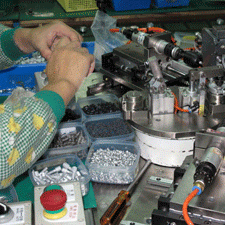First, apologies are in order to Jeff Shupe, SRAM's chief operating officer, and John Nedeau, SRAM's director for OEM sales. They had taken a couple of hours out of hectic schedule last Friday to take me through the company's factory.
I had asked them to pose for some photos and quickly snapped off a couple of shots. I warned them that I’m a lousy photographer. And I was right. Somehow I blew the photos and, while I was able to snap some factory shots, Jeff and John vanished in my digital camera’s memory bank. Ouch.
With that said, let’s start at the beginning. SRAM’s warranty manager for Asia, Alen Lee, picked me up about 11:30 at the Splendor Hotel where Doug McClellan and I are staying for Taichung Bike Week.
Twenty minutes later we were walking upstairs to the main office where John was meeting with a group from Europe during what SRAM calls “Taiwanathon.” Today’s schedule included meetings with Strongman, MEC and Fuji. It’s all business. Each gets a full-on presentation of SRAM’s 2011 product groups—mountain, road, brakes, forks, wheels and more.
It’s fair to say SRAM folks are tight-lipped about what’s discussed in these meetings. And no one is eager to share highlights on what changes, innovations or pricing SRAM will introduce for 2011.
But before making our way through the factory, the three of us walked half-a-block or so down the street to a local restaurant. Its owners have most likely made a small fortune feeding SRAM employees over the years. We joined a table of SRAMsters, grabbed some chopsticks, and filled our bowls as one dish after another sailed past on a rotating Lazy Susan.
And then it was on to the factory. It’s been some years since I had been here and it was easy to see the phenomenal growth the company has undergone since its founding back in the mid-1980s. Jeff and John have been with SRAM almost from the beginning and rightfully take pride in what the company has accomplished.
Over the years SRAM has poured millions into this factory for machinery—injection molding, CNC capacity, robotic operations, assembly machines, powder coating, air filtration, water recycling, and a recently installed anodizing operation. This year alone, Jeff said, the company spent about $5 million in plant upgrades.
The anodizing facility, housed in a new building, cost half-a-million dollars. Staff is currently testing it and soon all anodizing moves in-house.
According to Jeff, about 800 employees work here and on average earn about $8 an hour. That includes their health care, lunch, twice-yearly medical exams courtesy of a mobile van, and the traditional Chinese New Year’s bonus.
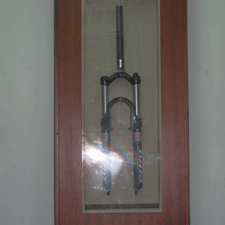
The first Rock Shox Pilot assembled at this factory—Sept. 13, 2002.
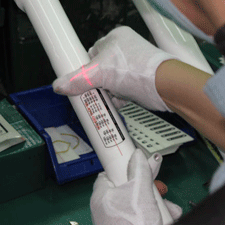
An employee places an adhesive-free decal on a fork leg. A laser-like light guides placement. The fork and decal is then clear-coated.
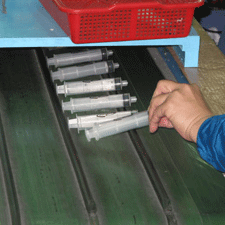
No, these aren't EPO syringes destined for next year's pro tour, John assured me. Think Rock Shox.
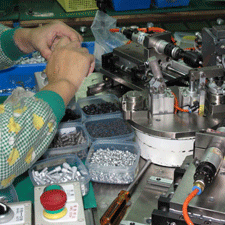
Two hands still must place tiny parts into an automated assembly machine.
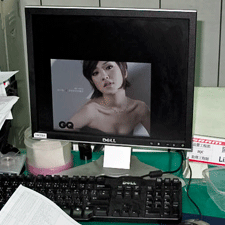
Quality control? While walking through the quality control center, one computer seemed fixated on "quality" photography.

This offers a hint at the size of the recently built anodizing factory.
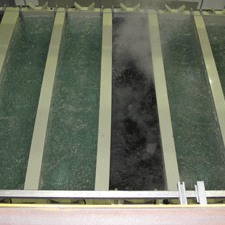
A shot from above of several newly installed anodizing tanks.
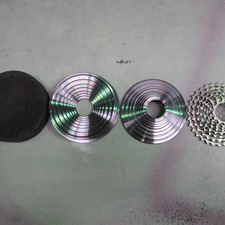
The dark round object is a solid chunk of steel. Once placed in a CNC machine it's transformed into a cassette. Note the progression of each step.

